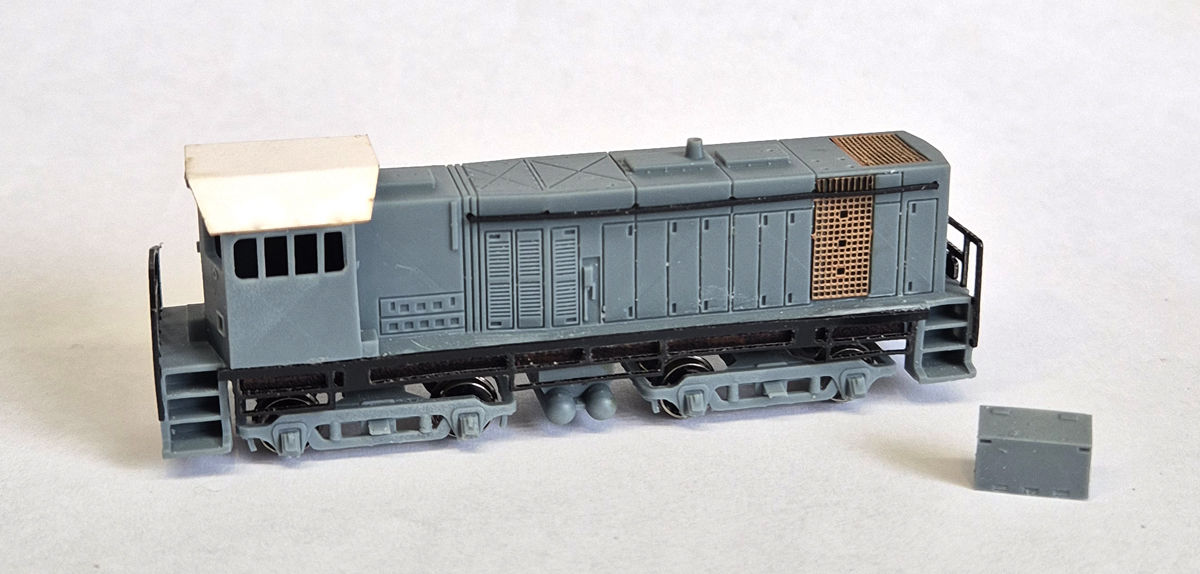

LHS T320-T346 SDLoco9 RHS T413 Dynamic braked unit SDLoco14
Victorian Railways - T class, H class & Y class kits (Introductory price $100.00 each - limited time) easy to build as all the body is 3D printed and just a few components are added to complete. Use with a donor mech or as a dummy unit supplied in the kit


LHS T320-T346 SDLoco9 RHS T413 Dynamic braked unit SDLoco14

T367 - T398 SDLoco12
T399 - T412 & H1-H5 SDLoco13

High nose Mansard long hood T347-T356 SDLoco10 High nose normal long hood T357-T366 SDLoco11
These kits contain 3D-printed bodies, etched grills, horns, bogies and wheels for running on the dummy chassis, and fuel tank plus additional items that are laser cut, printed or screen printed.
Also included is a laser-cut chassis with bogies which you can run as a dummy loco until you get your desired mech
Available as either VR blue or V/Line
T320-346 requires Atlas VO 1000 mech or as a dummy
T347-412 and H1-H5 require Requires Bachmann S4 mech or Atlas S2 mech or as a dummy
T413 dynamic unit requires Atlas VO 1000 mech or as a dummy
Y class currently is a dummy with battery box 3D print for Y101-Y125 but a new mech is being developed. Side skirts and handrails are flexible laser plastic
The T class became the largest diesel class on the Victorian Railways and were built by Clyde’s Granville workshops over 13 years from 1955-1968. As a consequence, there are 5 versions but the group is commonly called by the 3 versions of “Flat Top”, “High Nose” and “Low Nose”.
They were purchased to serve the states branch lines and to replace the ageing K’s and the newly arrived J class steam locos. This was the 2nd variation of the high nose entered traffic between December 1961 – May 1962 and were assigned all manner of jobs with other classes.
The Y class became a workhorse for the Victorian Railways (VR), ranking as their second-most common diesel engine. They were the go-to locomotives for shunting (or switching) duties in every VR yard. But their usefulness extended beyond that, as they also served as reliable power for branchline trains.
The driver's controls were designed for operating from the "long end," which was designated as the No. 1 end. Interestingly, the first 50 Y class locomotives had 6-cylinder E.M.D. 567 engines, while the last 25 were equipped with 6-cylinder E.M.D. 645 engines. This marked the only instance worldwide where a 6-cylinder E.M.D. 645 engine was used in locomotive service.
Another unique feature of the Y class was their bogies, which were repurposed from scrapped swing door motors. This resourceful use of recycled parts speaks to the ingenuity of the VR's engineering team.
